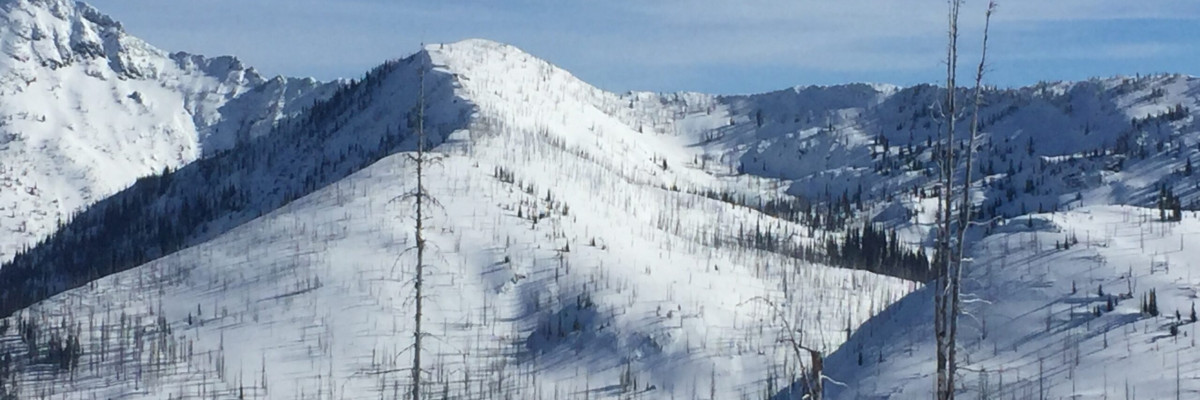The current avalanche danger is Considerable on steep( >30 degrees) wind loaded slopes above 7000 ft for the west central Montana backcountry. All other slopes above 7000 ft are moderate. Below 7000 ft all slopes arelow in the morning and will rise to moderate in the afternoon.
Good morning, this is Travis Craft with the West Central Montana Avalanche Center’s avalanche advisory for February 14, 2017. This danger rating does not apply to operating ski areas, expires at midnight tonight and is the sole responsibility of the U.S. Forest Service.
Weather and Snowpack
Mountain temperatures range from 17 F to 32 F in the region. Winds are 3 mph with gusts of 4 mph out of the S in the Bitterroot. Point Six, in the northern part of the advisory area, winds are reading 11 mph with gusts of 16 mph out of the NNW. No new snow in the last 24 hours. Some remote stations are reporting and others are offline.
The past storm caused a natural avalanche cycle through the west central Montana backcountry. There were many reports of natural crowns from the southern Bitterroot to the southern Swan that happened Wednesday through Friday. Tim and I were in the central Bitterroot yesterday. Josh, Matt, and Ryan were at Lost Trail Pass teaching a level-one avalanche course over the weekend. Dudley was at Yurtski in the southern Swan also teaching. Josh and Ryan had a day off yesterday and went to the Missions just north of our advisory area. We all saw evidence of the natural avalanche cycle. We saw wind scoured and loaded slopes at elevations above 7000 ft. We all experienced the inversion yesterday and noted roller balls were releasing naturally in the afternoon on sun exposed slopes. Dudley got propagation in multiple snow pits on different aspects in the southern Swan above 7000 ft. Josh and Matt got propagation in pits at Lost Trail above 7000 ft. Tim and I did not get propagation in our pit at 7000 ft in the central Bitterroot. Ryan and Josh saw wind loaded slopes and natural debris in the Missions just North of our advisory area, above 7000 ft.(Here is the Link to Trip Report).
The primary avalanche problem is wind slabs above 7000 ft. These slabs are on leeward terrain. They will be sensitive to human triggers.
The second avalanche concern is persistent slabs. There are many weak layers in our snow pack. Before committing to any steep terrain assess the layers in the snowpack by digging a pit. These weak layers are at all elevations.
The last avalanche problem is loose wet releases in the afternoon on sun exposed slopes. The temperature will rise throughout the day, pay attention to roller balls. When the roller balls appear it is time to change aspects to a shadier one.
Avalanche and Weather Outlook
The region will be dominated by high pressure the next two days. There will be a strong inversion. Make sure that the snow pack has refrozen by checking the remote weather stations to get a gauge of mountain temperatures. If mountain temperatures do not get below freezing overnight, be cautious when traveling on these slopes. With the predicted conditions, the avalanche danger will rise in the afternoon on sun exposed slopes.
If you are out in the backcountry, please send us your observations, these are very helpful in producing the advisory. Logan will issue the next advisory on February 16, 2017.
Ski and ride safe.














